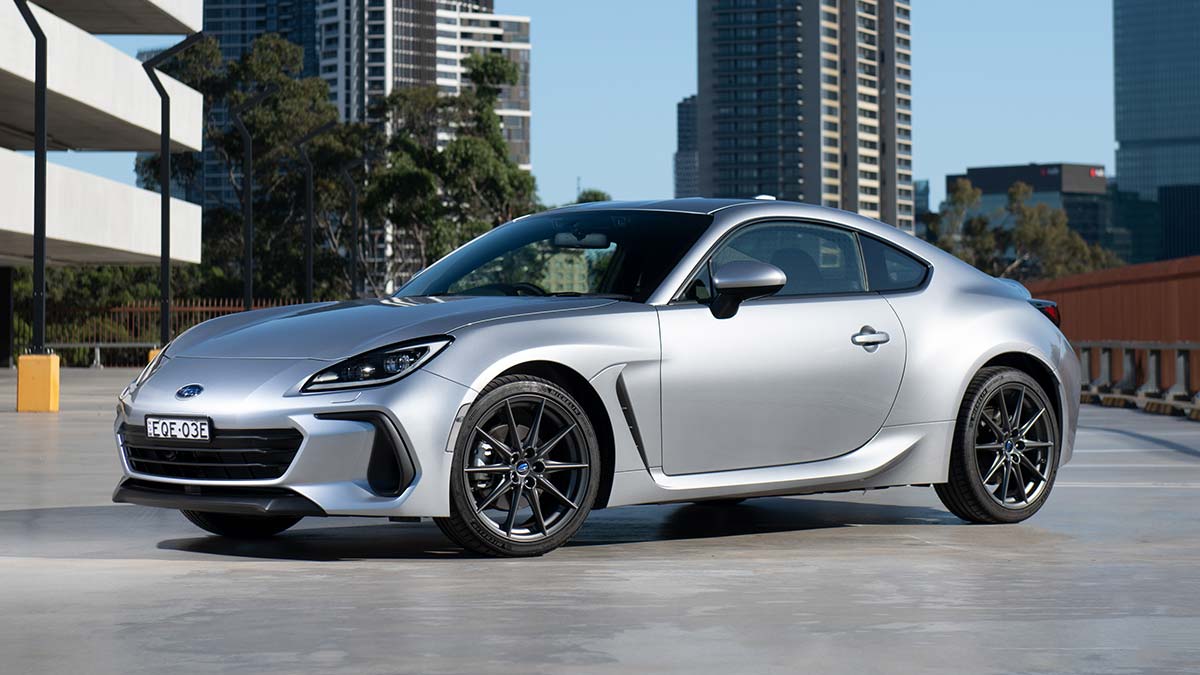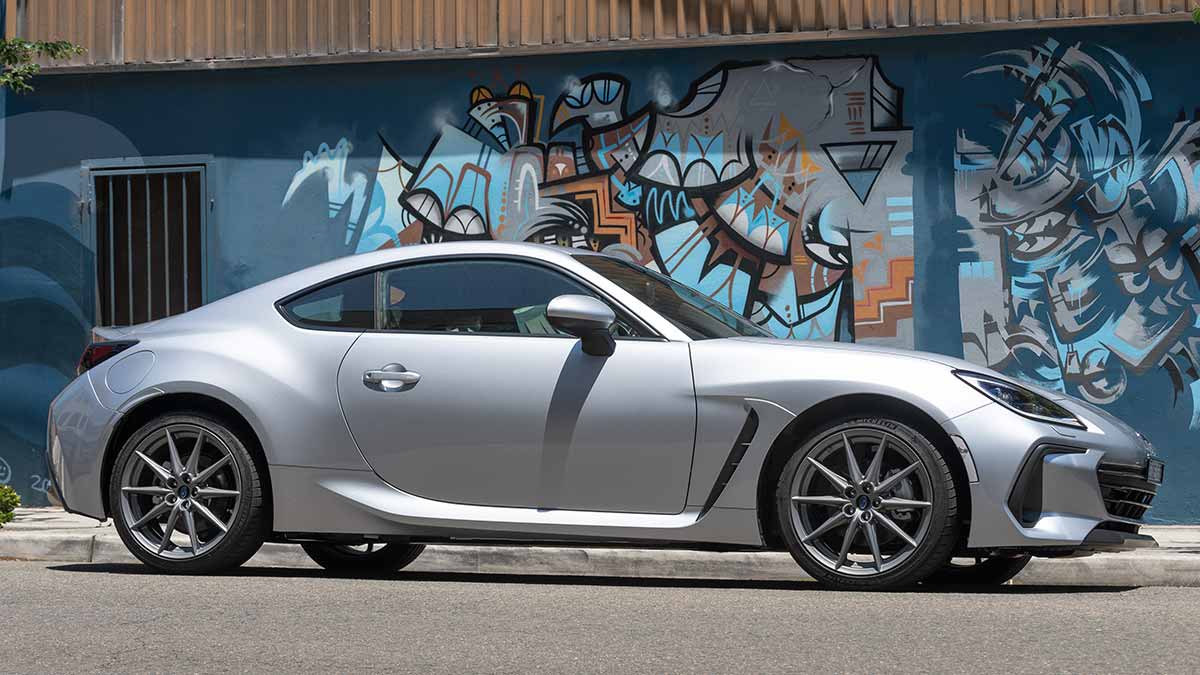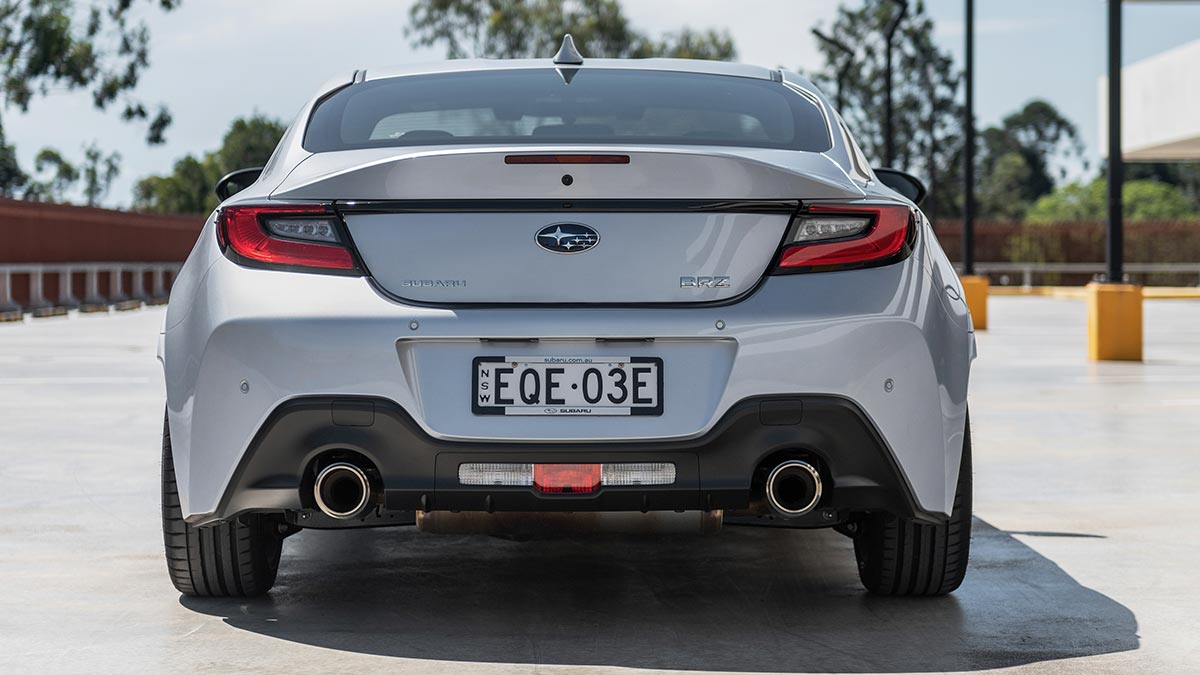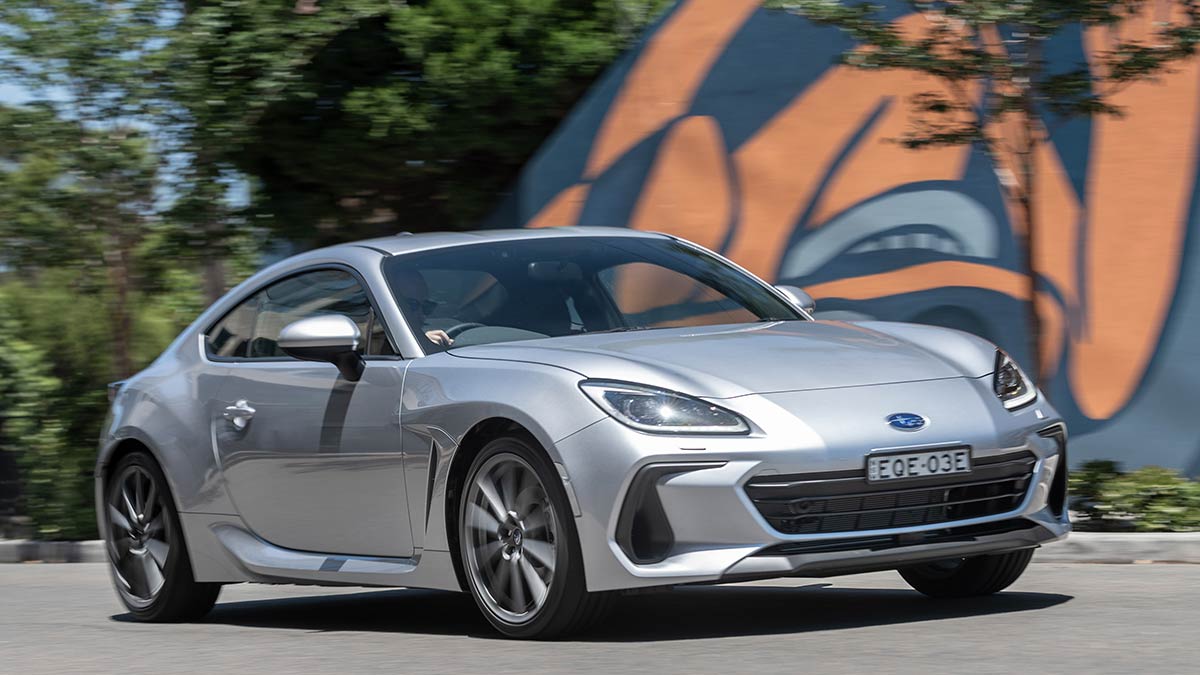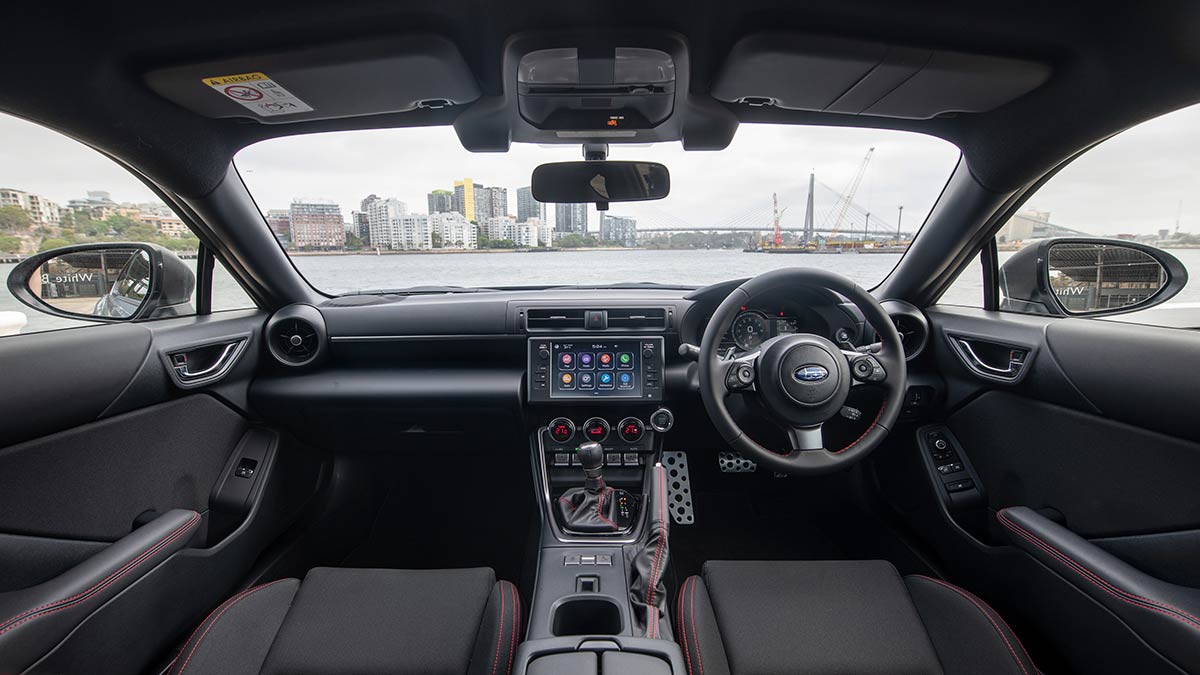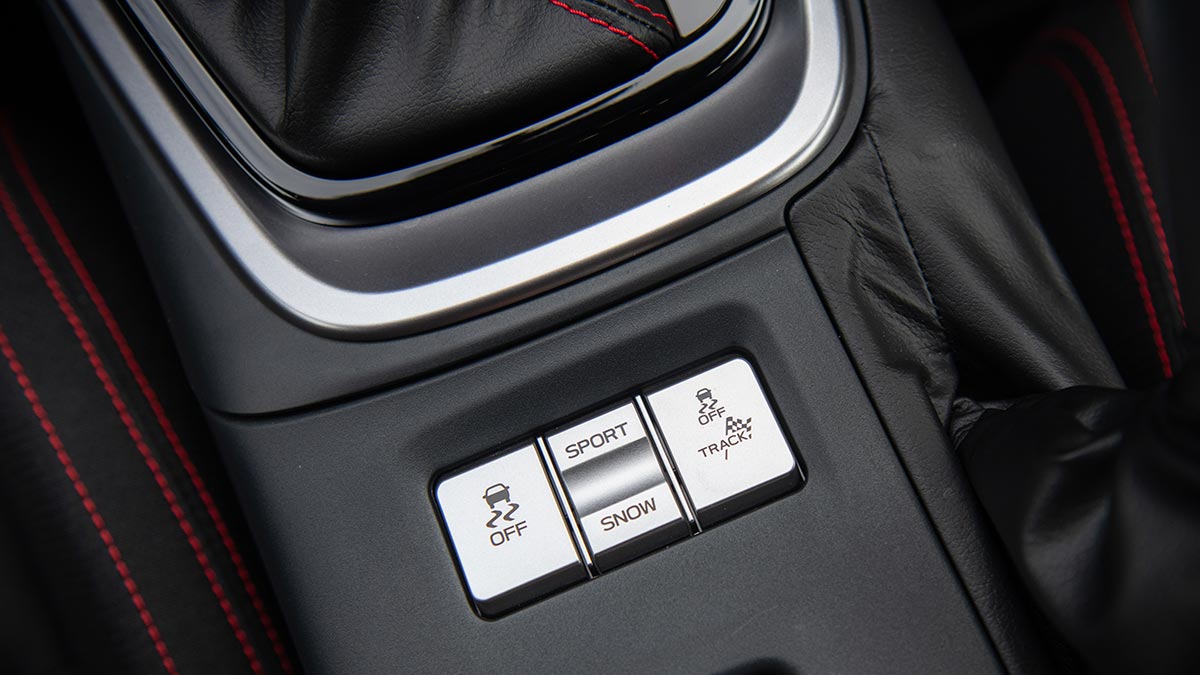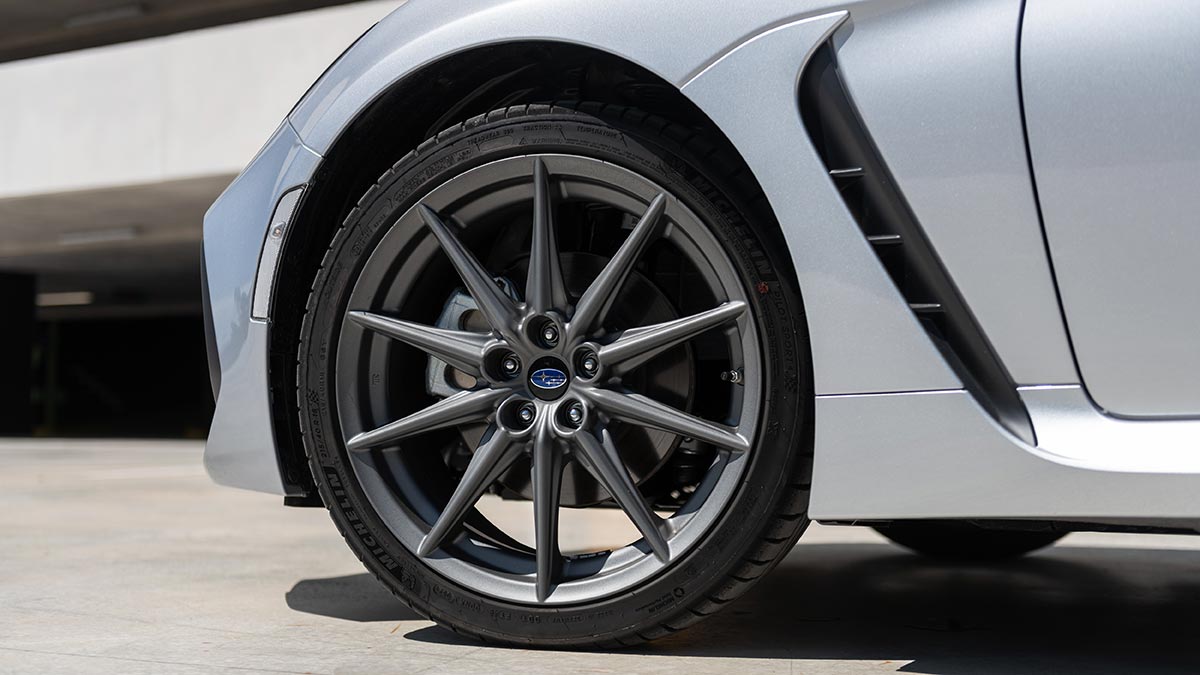2022 Subaru BRZ road test review

The new Subaru BRZ is a sharply-priced sports car improving on the original formula, and is likely to draw in new enthusiasts.
Affordable sports cars are almost an oxymoron in 2022. There are still a couple lurking in the showrooms but the niche nature of the segment doesn't encourage car companies to green-light many projects.
Subaru's BRZ is one. Conceived as a collaboration with Toyota, the lightweight rear-wheel-drive, two-door coupe, had the looks and the balance to dance around tight corners or tracks with grin-inducing capability.
Criticisms of the svelte coupe were few and Subaru has addressed most of them with its second-generation machine.
The bad news is potential owners will be a on a long waiting list and, for now, they have no choice given that Toyota's equivalent car, the 86, has yet to launch in Australia (though they still have stock of the first-generation vehicle).
On this page
- How much does the Subaru BRZ cost?
- How safe is it?
- What's it like inside?
- What's under the bonnet?
- Is it efficient?
- How does it drive?
- Should I buy one?
How much does the Subaru BRZ cost?
Relatively cheap pricing was partly the reason for the first generation Subaru BRZ's success.
This iteration is similarly compelling, with an operning price of $38,990 before on-road costs for the entry Coupe with a six-speed manual gearbox. The Coupe S costs an extra $1,200 and adds alcantara and leather-finished front seats with seat heating.
According to the Subaru Australia website, the driveaway numbers are $42,699 and $43,949 respectively for buyers in the Melbourne metro area.
Default gear includes an 8.0-inch infotainment touchscreen, with smartphone mirroring, satellite navigation and digital radio, dual-zone airconditioning and keyless entry.
Externally, there are LED headlamps and 18-inch alloy wheels shod with Michelin Pilot Sport 4 tyres.
Opting for the six-speed automatic transmission in either version adds a hefty $3,960. That’s well over the price difference between the two transmissions in the US and UK, but the price also incorporates a farily dramatic improvement in the BRZ's active safety systems.
The five-year warranty requires servicing every 12 months or 15,000km and costs over the five years are $2,390 for the manual and $2,474 for the auto.
How safe is the Subaru BRZ?
ANCAP has yet to test the BRZ, but buyers of the manual version shouldn't hold their breaths hoping for a five-star rating. That's down to the fact manual variants lack autonomous emergency braking and a lane departure warning. Those features account for 10 of the 16-points in ANCAP’s “safety assist” criteria.
BRZs fitted with an auto do, courtesy of the dual-camera “EyeSight” system mounted at the top of the windscreen, that also endows the self-shifting versions with adaptive cruise control.
Assuming the structural rigidity withstands the physical crash tests (and Subaru prides itself on building five-star bodies), the auto is expected to earn a five-star rating.
All versions have blind-spot monitoring and rear cross-traffic alert, along with seven airbags.
What's it like inside the Subaru BRZ?
The interior of the BRZ is a much more amenable place to be than its predecessor.
The 8.0-inch touchscreen brings a much-needed modern touch and, even though it is not the biggest display unit ever fitted to a car, it is proportional with the compact cockpit.
The bucket seats are supportive and not hip-displacingly hard to get into. You tend to drop into a sports car's seat and the BRZ is no exception, but it isn't a contortion.
Those seats are also the way to determine whether you're looking at the Coupe or the Coupe S.
The S version adopts suede and a mix of real and fake lether, along with a heating function. For those who can't work that out, look for the red stripe on the backrest.
The rear seats are there as a secondary cargo depository. Unless you're Snow White, none of your friends will fit in those pews (and even Snow White's seven off-siders might struggle).
Boot capacity isn't huge and the spare wheel protrudes into what little space is available. The upside is that spare is a full-size alloy, rather than a temporary spare or tyre repair kit.
What’s under the Subaru BRZ bonnet?
Subaru resisted the call to fit a turbocharger to its two-litre boxer (where the pistons move horizontally rather than vertically) engine.
Instead, it boosted power by 22kW and 38Nm by increasing the displacement from 2.0-litres to 2.4.
Outputs are now 174kW and 250Nm, with that peak torque kick now starting while the engine is spinning at medium revs, rather than close to its 7500rpm redline.
Drivers had to hit 6400rpm to see maximum torque in the first generation vehicle, leading to online chatter about a "torque hole" when accelerating through the mid-range.
The basic underpinnings of the BRZ are unchanged, though with a few key differences. The six-speed manual gearbox has been reinforced to cope with the extra power and the synchros have been upgraded to improve the shift quality.
The six-speed manual has revised synchros to improve the shift from second-to-third and third-to-fourth gear.
Opt for the auto transmission and the software is now intuitive enough to hold a gear at decent revs if it has detected heavy throttle inputs.
Is the Subaru BRZ efficient?
Fuel consumption is generally not the first consideration for engineers when working on a sports car.
The Subaru BRZ consequently consumes 8.8 litres/100km for the auto and 9.5 litres for the manual in the official combined fuel figures. It is also going to require 98RON fuel for optimal performance, which will make it more expensive to run.
More efficient turbocharged engines tend to produce similar performance with less petrol ... think Ford Fiesta ST and Hyundai i20N.
How does the Subaru BRZ drive?
There are always going to be compromises if you plan to buy a BRZ as a daily driver. Space for luggage will be tight, even for two people, carrying extra friends is really not an option and the suspension feels hard and lumpy as you mount patched pavement and speed humps.
Then there's the tyre roar, which can be downright irritating on extended freeway runs.
But then you hit the back roads and the BRZ justifies its existence in the driveway by performing with all the adroitness of a gymnast.
Transitioning from left to right curves is immersively entertaining, courtesy of direct steering and feedback though both the chassis and wheel.
The chassis, while largely carried over from the first generation in terms of overall design, has been stiffened to improve torsional rigidity by more than 50 per cent - that's a fancy way of saying the chassis doesn't flex through cambered corners.
The power delivery is progressive and the engine is more than willing to wind out, which means drivers are more than willing to hear that distinctive boxer snarl.
The traction control's track mode is more than adequate for track days, allowing the coupe a significant degree of leniency before the software reins in the wayward movement.
Should I buy one?
If you're after an affordable sports coupe that looks the business and does the job on back roads, the Subaru BRZ is the pick of the naturally aspirated options (at least until the arrival of the Toyota 86).
If you are chasing outright performance, Hyundai's N-badged hatches and sedans are right up there, as is the Ford Fiesta ST.
They don't use the rear-drive layout, though, and that classic set-up, along with a focus on handling rather than outright hustling, is a major reason behind the BRZ's cult following.
The information provided is general advice only. Before making any decisions please consider your own circumstances and the Product Disclosure Statement and Target Market Determinations. For copies, visit racv.com.au. As distributor, RACV Insurance Services Pty Ltd AFS Licence No. 230039 receives commission for each policy sold or renewed. Product(s) issued by Insurance Manufacturers of Australia ABN 93 004 208 084 AFS Licence No. 227678.
